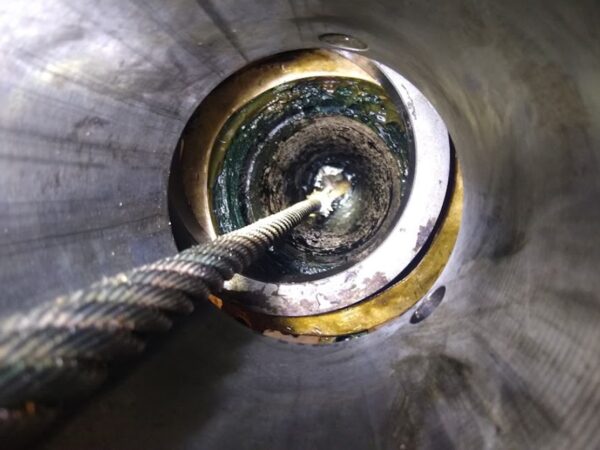
It was a Friday like many others for John Patterson, a history teacher in Jefferson, Ohio. He was in front of his students when the school building started to rumble.
“It sounded like people were working on the roof, but it was January, so that couldn’t be the case,” he said.
He was right. It was not workers, but rather a 4.9 magnitude earthquake, the most powerful recorded in the Lake Erie region.
While Patterson’s experience happened 36 years ago – on Jan. 31, 1986 – that earthquake is far from the only one in the Great Lakes, especially around Lake Erie.
In the first six weeks of 2022, seven earthquakes were recorded in the eastern basin of Lake Erie. Over 200 earthquakes have been recorded since 1776 in Ohio, mostly around Lake Erie.
Seismic activity rarely exceeds 3.5 magnitude, but there have been a few earthquakes that have eclipsed 4.0. In 2019, for example, the Ohio Department of Natural Resources detected a 4.2 magnitude earthquake off Lake Erie. It was the 5th earthquake to break 4.0 in Ohio since 1986.
Scientists are working on figuring out why.
Earthquake Causes
More sophisticated monitoring systems may contribute, in part, to the rise in recorded earthquakes, but that technology does not account for the underlying cause or variation in seismic magnitude.
Yihe Huang, assistant professor in geophysics, earth and environmental sciences at University of Michigan, said that Lake Erie has more earthquake activity than other Great Lakes because there are more faults present there.
And Ohio has more faults that are close to Lake Erie.
While the fault lines in the Great Lakes region may not be like the better-known ones in the American West, scientists say they still play a role in contributing to seismic activity.
“Most if not all faults in Ohio and the Midwest are deeply buried under sedimentary rocks and glacial soils,” said Jeff Fox, a geologist and seismologist with the Ohio Department of Natural Resources. “The faults that are there are left over from ancient weaknesses in the earth’s upper crust from prehistoric tectonic activity such as the buildup of the Appalachian Mountain range.”
But the causes of these Lake Erie-adjacent earthquakes aren’t fully understood, he said. “Ohio does not sit on or near a tectonic plate boundary,” which usually drives seismic activity, Fox said.
Testing Theories
Huang theorized that variations in the lakes are contributing to the earthquake occurrences.
“(My) hypothesis is that the water level is changing,” which can impact earthquake frequency and intensity, she said. She joined forces with Fox and other experts to test this hypothesis.
Their findings were released in May in a peer-reviewed article “Seismicity Around Southern Lake Erie during 2013–2020 in Relation to Lake Water Level” published in the journal Seismological Research Letters.
The study was prompted by the 2019 Lake Erie earthquake that registered a 4.2 magnitude and produced numerous aftershocks. This particular incident occurred after a significant increase to water levels in the Great Lakes and the highest water level recorded in Lake Erie.
Separate research conducted by a team at Michigan Technological University projected that Lake Erie’s water level will increase by 28 centimeters by 2050 due to factors related to climate change.
To test the water level-earthquake correlation, researchers first cataloged 437 relatively small Lake Erie-area earthquakes that occurred between 2013 and 2020,
Then, according to a University of Michigan news release, “ the researchers calculated the stresses that shifting Lake Erie water levels would impart to faults in the rocks beneath the lake and used various statistical methods to look for a correlation between earthquake rates and water levels.”
The results of the study were inconclusive, and researchers have called for more work to either establish or rule out a correlation between Lake Erie water levels and seismic activity.
Now, Huang and her colleagues at the University of Michigan are planning follow-up studies, using fiberoptic cable to detect weaker seismic activity patterns in Lake Ontario as well as running simulations on water-level fluctuations in Lake Erie area faults.
The Ohio Department of Natural Resources is also increasing its capacity to monitor activity and find answers in the patterns, Fox said.
“Ohio has a 26-station seismic network that continuously records earthquake activity and alerts staff seismologists in real time, 24/7/365,” he said.
In addition, the Ohio Geological Survey has a recording seismic station at Lake Erie Bluffs Park in Lake County and plans on adding stations in Ashtabula and Lake counties.
Catch more news at Great Lakes Now:
The Great Lakes sugaring season is changing
Bugs, Shorter Winters, Climate: Great Lakes vineyards face changing circumstances
Featured image: Map illustrating the frequency of damaging earthquake shaking around the country. (Photo Credit: USGS)




